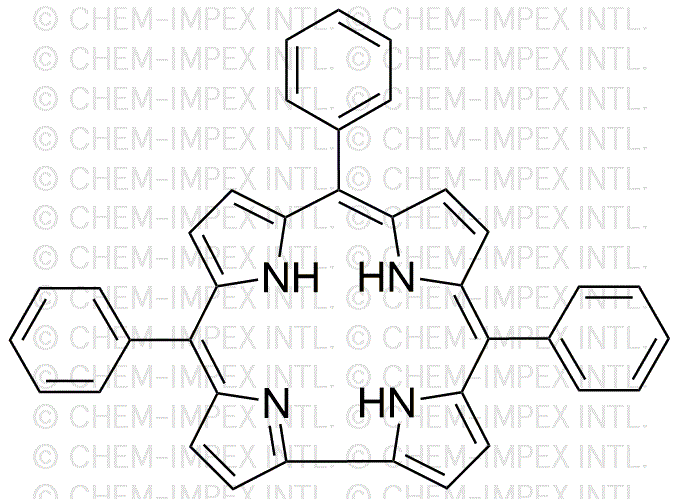5,10,15-(Triphenyl)corrole is widely utilized in research focused on:
- Photodynamic Therapy: This compound is being explored for its ability to generate reactive oxygen species when exposed to light, making it a potential agent in cancer treatment.
- Organic Photovoltaics: Its unique electronic properties allow for applications in solar energy conversion, enhancing the efficiency of organic solar cells.
- Fluorescent Probes: The compound can be used in biological imaging, providing vivid fluorescence for tracking cellular processes in real-time.
- Catalysis: It serves as a catalyst in various chemical reactions, improving reaction rates and selectivity in organic synthesis.
- Material Science: Its structural properties contribute to the development of advanced materials, including sensors and electronic devices, due to its stability and conductivity.
General Information
Properties
Safety and Regulations
Applications
5,10,15-(Triphenyl)corrole is widely utilized in research focused on:
- Photodynamic Therapy: This compound is being explored for its ability to generate reactive oxygen species when exposed to light, making it a potential agent in cancer treatment.
- Organic Photovoltaics: Its unique electronic properties allow for applications in solar energy conversion, enhancing the efficiency of organic solar cells.
- Fluorescent Probes: The compound can be used in biological imaging, providing vivid fluorescence for tracking cellular processes in real-time.
- Catalysis: It serves as a catalyst in various chemical reactions, improving reaction rates and selectivity in organic synthesis.
- Material Science: Its structural properties contribute to the development of advanced materials, including sensors and electronic devices, due to its stability and conductivity.
Documents
Safety Data Sheets (SDS)
The SDS provides comprehensive safety information on handling, storage, and disposal of the product.
Product Specification (PS)
The PS provides a comprehensive breakdown of the product’s properties, including chemical composition, physical state, purity, and storage requirements. It also details acceptable quality ranges and the product's intended applications.
Certificates of Analysis (COA)
Search for Certificates of Analysis (COA) by entering the products Lot Number. Lot and Batch Numbers can be found on a product’s label following the words ‘Lot’ or ‘Batch’.
*Catalog Number
*Lot Number
Certificates Of Origin (COO)
This COO confirms the country where the product was manufactured, and also details the materials and components used in it and whether it is derived from natural, synthetic, or other specific sources. This certificate may be required for customs, trade, and regulatory compliance.
*Catalog Number
*Lot Number
Safety Data Sheets (SDS)
The SDS provides comprehensive safety information on handling, storage, and disposal of the product.
DownloadProduct Specification (PS)
The PS provides a comprehensive breakdown of the product’s properties, including chemical composition, physical state, purity, and storage requirements. It also details acceptable quality ranges and the product's intended applications.
DownloadCertificates of Analysis (COA)
Search for Certificates of Analysis (COA) by entering the products Lot Number. Lot and Batch Numbers can be found on a product’s label following the words ‘Lot’ or ‘Batch’.
*Catalog Number
*Lot Number
Certificates Of Origin (COO)
This COO confirms the country where the product was manufactured, and also details the materials and components used in it and whether it is derived from natural, synthetic, or other specific sources. This certificate may be required for customs, trade, and regulatory compliance.


